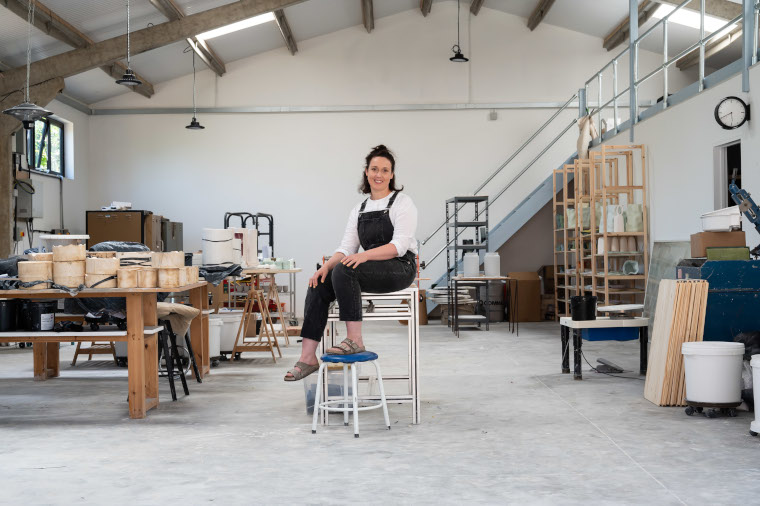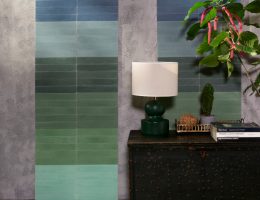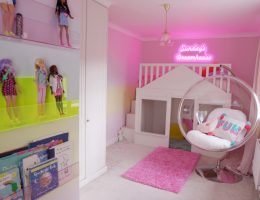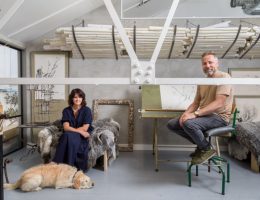Ceramicist Emma Louise Payne explains the appeal of working with clay, the challenges of bespoke projects and shares the unusual plans she has for her mother
What appeals to you about working with clay? I’ve enjoyed working with clay since art class at school. It’s like art and chemistry combined. There is so much creativity, and techniques and technicalities to explore, that you never stop learning. I’ve been fortunate enough to travel and learn different applications of ceramics from around the world. I’ve studied ceramics in four countries and over time I’ve learnt it is as much about culture as it is about art. It stems from the ground and grows through communities adapting to their needs, wants and beliefs, resulting in various beautiful outcomes. It can be used or admired, which is a transcending moment. To encapsulate a community’s beliefs, geography and skill in an object, and be able to use that object, is testament to how powerful the art form is.
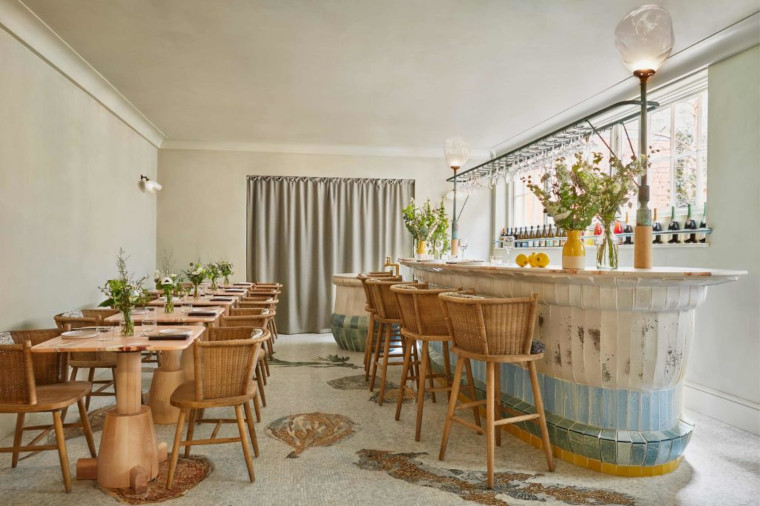
Tell me about the bespoke work you do for interior designers and architects? What has been your most challenging commission? I think as humans we are trained to forget the most challenging things we go through and tend to remember the beauty. Having said that, I’m working on a bespoke sink design for RedDeer which is made from over 500 tiles, has lots of complex curves and has to be above all functional. We sketched up some ideas and looked at materials and glazes from which we conceptualised a sculptural sink, but then comes the hard part of how to make it work. What structure should it sit on? Where does the plumbing go? How do we access the plumbing if there is a problem? However, these are also aspects I love! I like a challenge and I enjoy working with an architect/interior designer or client that makes me see an object in a way that I wouldn’t have seen before. My relationships with designers are built on trust which means we get to have fun and experiment with creating something truly bespoke for a client.
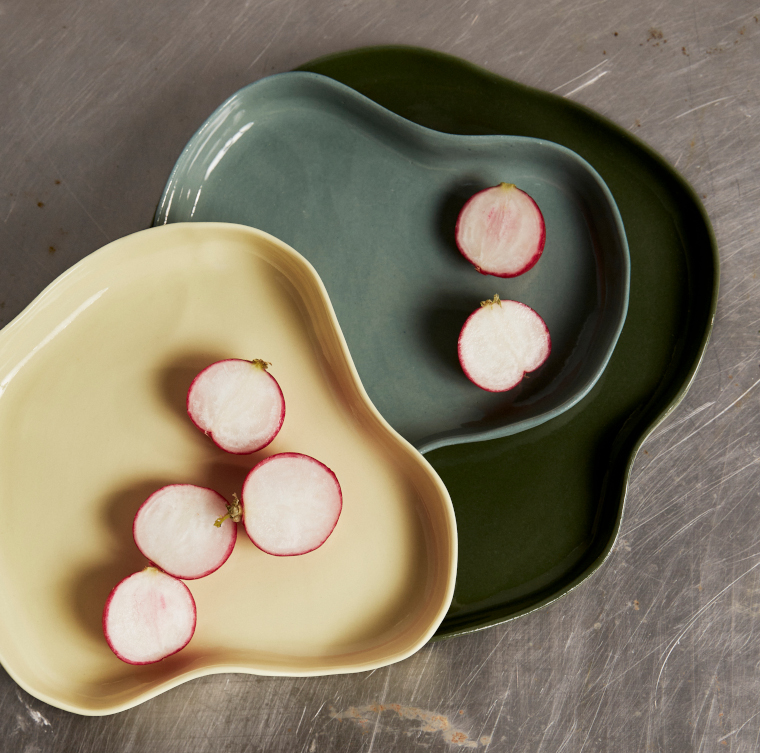
As well as the bespoke projects, you launched London Plane, tell me about this collection? The London Plane collection is inspired by the Plane Tree, an English native that is popular on the streets and parks of London. Instantly recognisable for its abstract bark patterns, it has muted, earth tones punctuated by violets and citrus greens and yellows. The collection is based on a core colour pallet of six tones that are reflected in six repeating shapes. The range is designed to be both sculptural objects as well as practical vessels. Everything is batch produced at my studio in Oxfordshire. (see the Emma Louise Payne collection here)
As a side note, London Plane has created a way for me to efficiently run my studio and manage large projects. I’ve often had an assistant for large projects for a month at a time but now I have someone a couple days a week and if we aren’t working on a large project then we are making London Plane. Having moved into a bigger workshop space earlier this year, London Plane has been a huge investment that has hopefully paid off.
You also hold classes in the studio, are these fun? Always! I’ve taught over the past five years in different studios and venues and it’s great to be able to teach in my own space. I always think people should enjoy learning and that there is a method to ceramics but if someone is enjoying doing something else – well that’s fine. I might have to explain that a design won’t last through the firing process but if they are enjoying themselves and happy to be in the moment and not too worried about the outcome in a few weeks, then let’s just live in the moment.
Next year I hope to do more intermediate classes which will see people having more creative freedom in what they make.
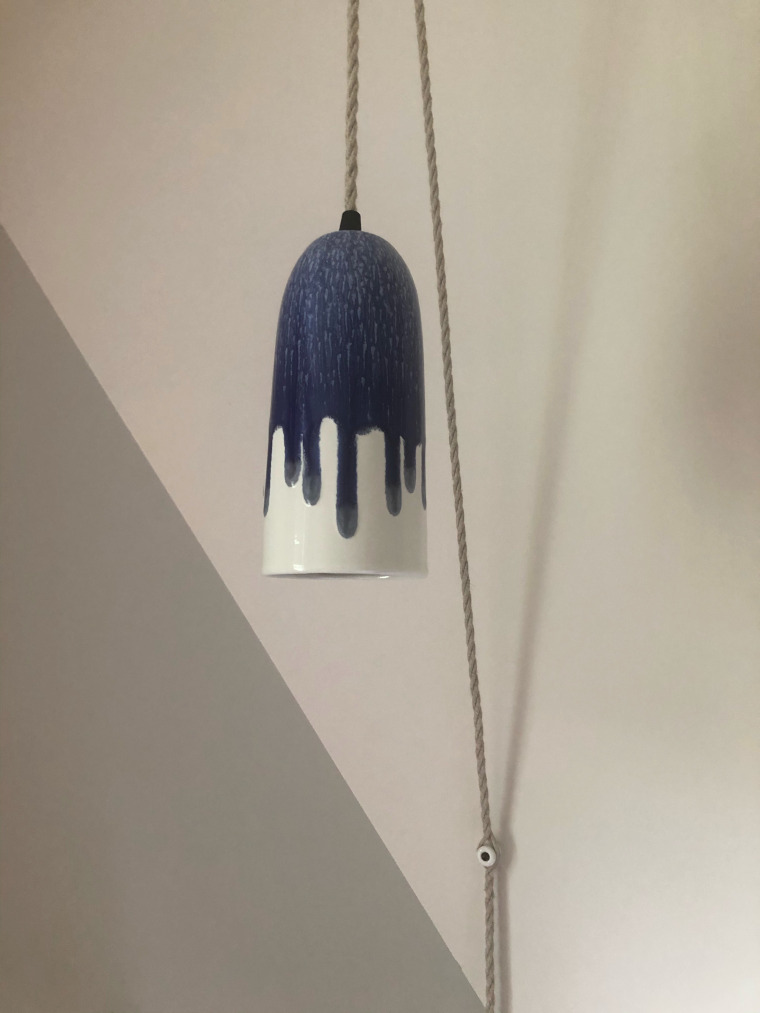
Paint a picture for the reader of your idyllic setting on the family farm. Well today I woke up and it was dark and cold and misty. I made a quick coffee and took the dog down into the woods behind the house with my head torch on. As we walked up the hill into a clearing the sun was rising behind us and the mist was still lying on the hill. We aren’t remote where I live and work but it sometimes feels like you could be.
I’m surrounded by family which is handy when I need an extra pair of arms. And it works both ways as sometimes I pick up my nephews from school or help with things when I can. There is a creative community of sorts on my doorstep – a graphic designer, oil painter, interior designers, another potter and some retired crafters.
What’s your favourite possession? I’m going off piste here but I’ve asked my mum if I could keep her skull when she dies. I realise this is a weird thought, and I’m not sure how practical, but I know a man donated his skull to the Royal Shakespeare Company to be used in Hamlet and that made me think. My mum wants to be cremated and some people use ash in pottery and bone china is made from animal bones after all. I wouldn’t want to turn my mum into a pot or even put her skull on display – but sort of have a part of her that isn’t just ash but something beautiful left behind. A true memento mori.
I’m saying all this because it was recently her birthday and her hands are one of my favourite objects. Slender, delicate, wrinkly and loving – I can’t imagine that I’ll ever be as great as my mum, but perhaps I’ll inherit her old hands in a few years’ time. And, if not, she’s agreed I can have her skull!
For a more normal answer, I own two ceramic works that were gifted to me. The first by my friend and sounding board Hilda who made a bowl for me when we were studying together. I also own two bowls by Anne Tophoj who was my tutor during my masters in Copenhagen. Again a fantastic person as well as a great artist. I’d rescue those from a small fire for sure.
If you enjoyed this interview you may also like my conversation with porcelain lighting designer Andra Munro
